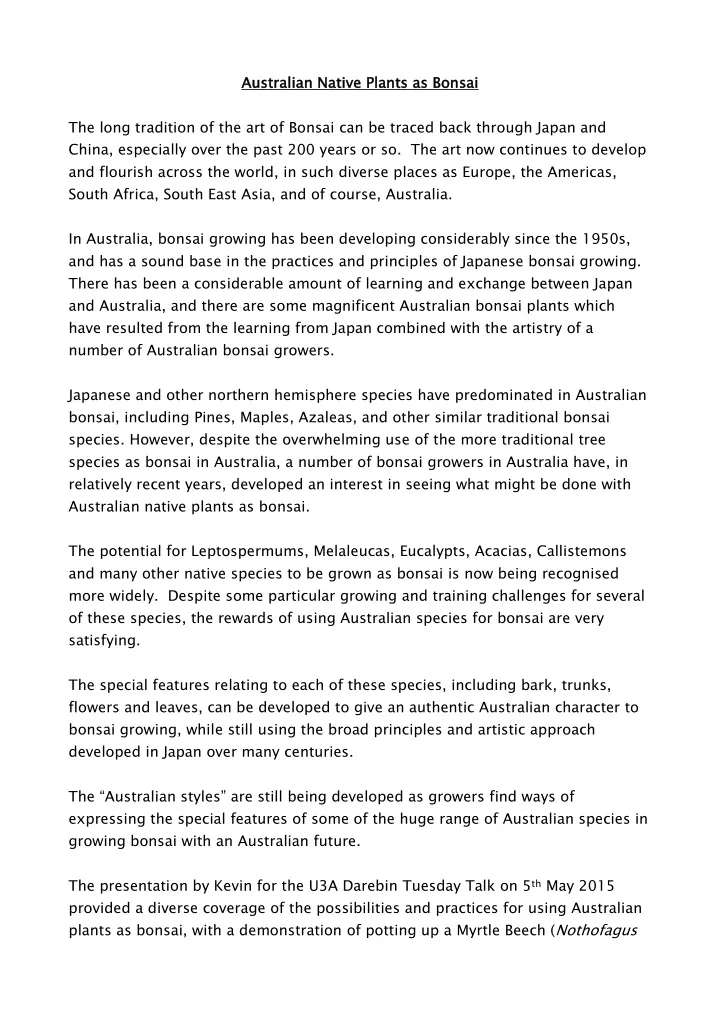

Aus Australian Na ralian Native ive Pla Plants s as B as Bonsa nsai The long tradition of the art of Bonsai can be traced back through Japan and China, especially over the past 200 years or so. The art now continues to develop and flourish across the world, in such diverse places as Europe, the Americas, South Africa, South East Asia, and of course, Australia. In Australia, bonsai growing has been developing considerably since the 1950s, and has a sound base in the practices and principles of Japanese bonsai growing. There has been a considerable amount of learning and exchange between Japan and Australia, and there are some magnificent Australian bonsai plants which have resulted from the learning from Japan combined with the artistry of a number of Australian bonsai growers. Japanese and other northern hemisphere species have predominated in Australian bonsai, including Pines, Maples, Azaleas, and other similar traditional bonsai species. However, despite the overwhelming use of the more traditional tree species as bonsai in Australia, a number of bonsai growers in Australia have, in relatively recent years, developed an interest in seeing what might be done with Australian native plants as bonsai. The potential for Leptospermums, Melaleucas, Eucalypts, Acacias, Callistemons and many other native species to be grown as bonsai is now being recognised more widely. Despite some particular growing and training challenges for several of these species, the rewards of using Australian species for bonsai are very satisfying. The special features relating to each of these species, including bark, trunks, flowers and leaves, can be developed to give an authentic Australian character to bonsai growing, while still using the broad principles and artistic approach developed in Japan over many centuries. The “Australian styles” are still being developed as growers find ways of expressing the special features of some of the huge range of Australian species in growing bonsai with an Australian future. The presentation by Kevin for the U3A Darebin Tuesday Talk on 5 th May 2015 provided a diverse coverage of the possibilities and practices for using Australian plants as bonsai, with a demonstration of potting up a Myrtle Beech ( Nothofagus
cunninghamii ) into a bonsai pot, and with a little of the required trimming and branch training which will result in a very nice bonsai plant in future. Good plants for bonsai stock can be found from nurseries, from (some) wild locations, and from our own gardens, as well as by growing from seed or cuttings. You can start by looking for a plant with good basic trunk character, a good possible branch structure, and then anything is possible! Advice, information, assistance, pots, tools and other resources are available through the several bonsai clubs and associations across Melbourne, including the Victorian Native Bonsai Club (www.vicnativebonsai.com.au) which meets in Coburg every month. Kevin Ritchie May 2015 The Myrtle Beech potted by Kevin as a demonstration (more branch training still required)
Grevillea ripicola (Jump'n'Jack) Kevin's prize-winning hanging basket, featuring native bonsai plants (Sheoaks, Kunzeas and others)
Recommend
More recommend